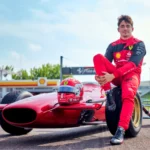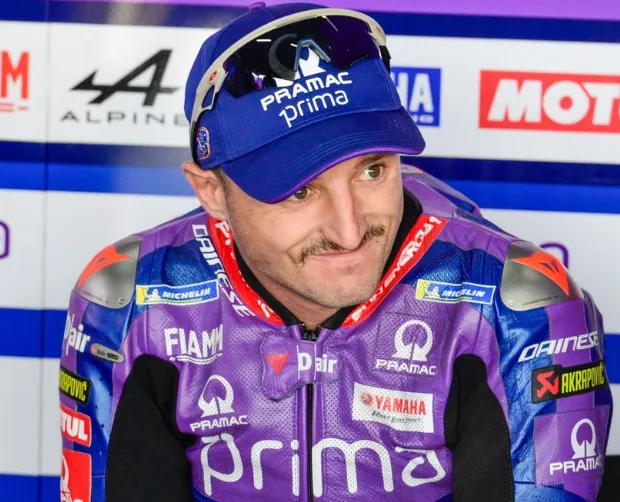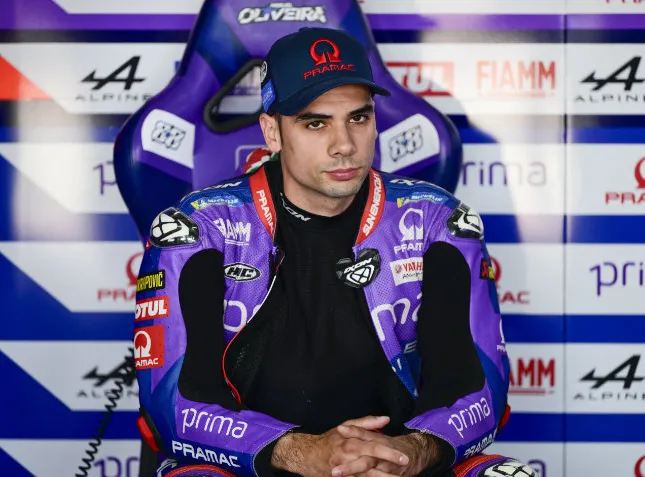
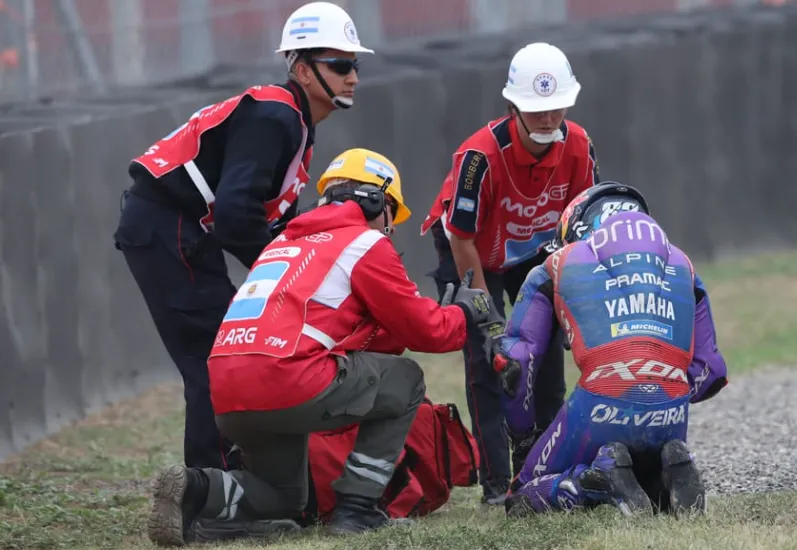
Miguel Oliveira and the concern from the racing suit: Could the protective airbag worsen his shoulder injury at MotoGP 2025?
The 2025 MotoGP season has brought a mix of optimism and concern for Miguel Oliveira, the talented Portuguese rider who recently joined Prima Pramac Yamaha. While fans and analysts alike have high hopes for Oliveira’s resurgence, a new issue has come to light: the potential impact of the racing suit’s protective airbag on his lingering shoulder injury. As Oliveira works to reclaim his top-tier form, questions have surfaced around whether the very technology designed to protect riders may be complicating his path to full recovery.
Protective airbag technology: Safety innovation or double-edged sword?
Since its mandatory introduction in MotoGP in 2018, the protective airbag system has significantly reduced the severity of many high-speed crashes. These airbags, embedded within racing suits, deploy in milliseconds upon detecting a crash, protecting vital areas such as the shoulders, collarbones, and chest. For many riders, this has been a game-changer, minimizing career-threatening injuries and even saving lives.
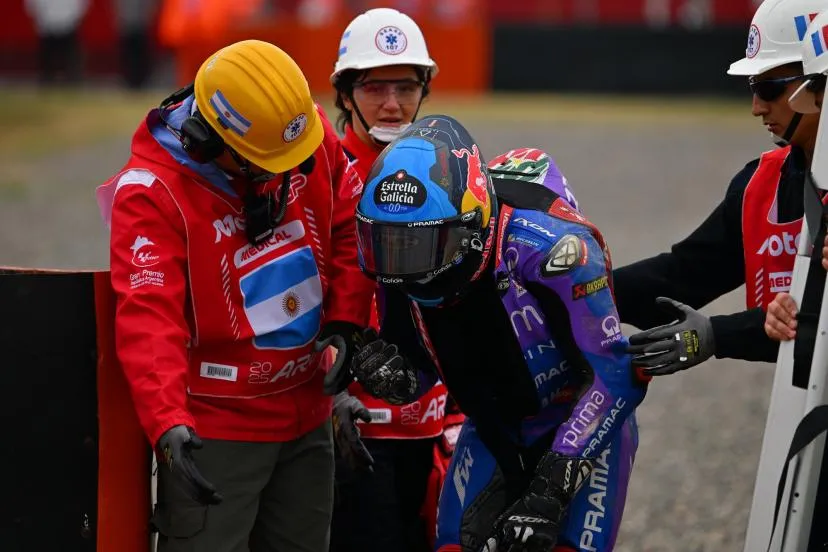
However, in Oliveira’s case, the airbag system has stirred genuine concern. After suffering multiple shoulder-related injuries throughout his career, most notably during his final seasons with KTM and later with RNF Aprilia, his left shoulder remains a sensitive area. Some insiders within the paddock and medical experts have questioned whether the aggressive inflation of the airbag could exacerbate a pre-existing condition. Unlike a healthy shoulder, one with prior trauma may react negatively to the pressure changes involved when an airbag deploys.
Recurring shoulder issues and their impact on Oliveira’s performance
Since his early days with KTM, Miguel Oliveira’s shoulder problems have been an unfortunate thread in an otherwise promising career. Though he has pushed through adversity, returning time and time again to the grid, the physical toll is undeniable. When he signed with Pramac Yamaha for the 2025 season, the hope was that new machinery, a new team environment, and improved medical support would give him a clean slate.
But Oliveira’s condition is far from simple. The shoulder joint, especially in riders who experience repeated trauma, can become prone to instability, impingement syndromes, and even torn labrums. When the protective airbag deploys, it places pressure directly around the clavicle and shoulder girdle. For a rider with underlying inflammation or scar tissue, this could lead to increased pain, reduced mobility, or delayed recovery.
The situation is delicate: while the airbag is essential for Oliveira’s safety during a crash, its potential to aggravate his injury during non-crash incidents or minor on-track contact remains a medical gray area. It becomes a dilemma of weighing long-term joint health versus immediate crash safety.
Miguel Oliveira’s medical team and Yamaha’s strategic response
Both Oliveira and his new team at Prima Pramac Yamaha are acutely aware of the challenge. Sources close to the team indicate that Oliveira’s medical staff is working with suit manufacturers to monitor the airbag’s pressure and deployment parameters. There are ongoing discussions around developing a customized airbag calibration, one that still meets MotoGP safety standards but offers a less aggressive inflation profile around his affected shoulder.
This is not the first time MotoGP has adapted to an individual rider’s health needs. In previous seasons, riders like Marc Marquez and Dani Pedrosa received personalized equipment accommodations. Oliveira’s case, however, may mark the first time where a safety innovation is under scrutiny for potentially worsening an existing injury.
From Yamaha’s perspective, Oliveira’s consistent performance and ability to challenge for podiums are vital. They understand that a compromised shoulder could cost them valuable points throughout the season. Therefore, the collaboration between Yamaha engineers, airbag technology providers, and Oliveira’s physical therapists is a key behind-the-scenes operation. If successful, it could set a precedent for future safety-technology personalization in the sport.
Mental resilience and Oliveira’s quest for redemption
One cannot discuss Oliveira’s journey without acknowledging his exceptional mental strength. After years of bouncing between satellite teams and battling injuries, his 2025 signing with Pramac Yamaha felt like a fresh beginning. Yet, once again, he’s faced with adversity. And yet again, he’s choosing to confront it head-on.
During preseason interviews, Oliveira acknowledged that the shoulder remains an issue, especially during aggressive riding stints and quick direction changes. Still, he expressed confidence in his ability to manage it with the right physical therapy, racing strategy, and, importantly, team support. He emphasized that pain management alone wouldn’t define his season—adaptability and smart riding would.
Moreover, Oliveira remains one of the most technically gifted riders on the grid. His braking style, ability to preserve tires, and racecraft have all earned him immense respect. If his team can give him machinery that allows him to ride at 90% instead of 100%, he can still be a major threat—assuming his shoulder doesn’t deteriorate further due to the airbag’s effect.
Riders’ union and the debate over airbag adaptability
The Oliveira case has opened broader conversations within the MotoGP riders’ community. There is a growing call for greater customizability in safety gear, especially airbags. While the standardization has been effective in reducing injuries, the one-size-fits-all approach may not be sustainable as the sport evolves and riders bring unique medical histories into competition.
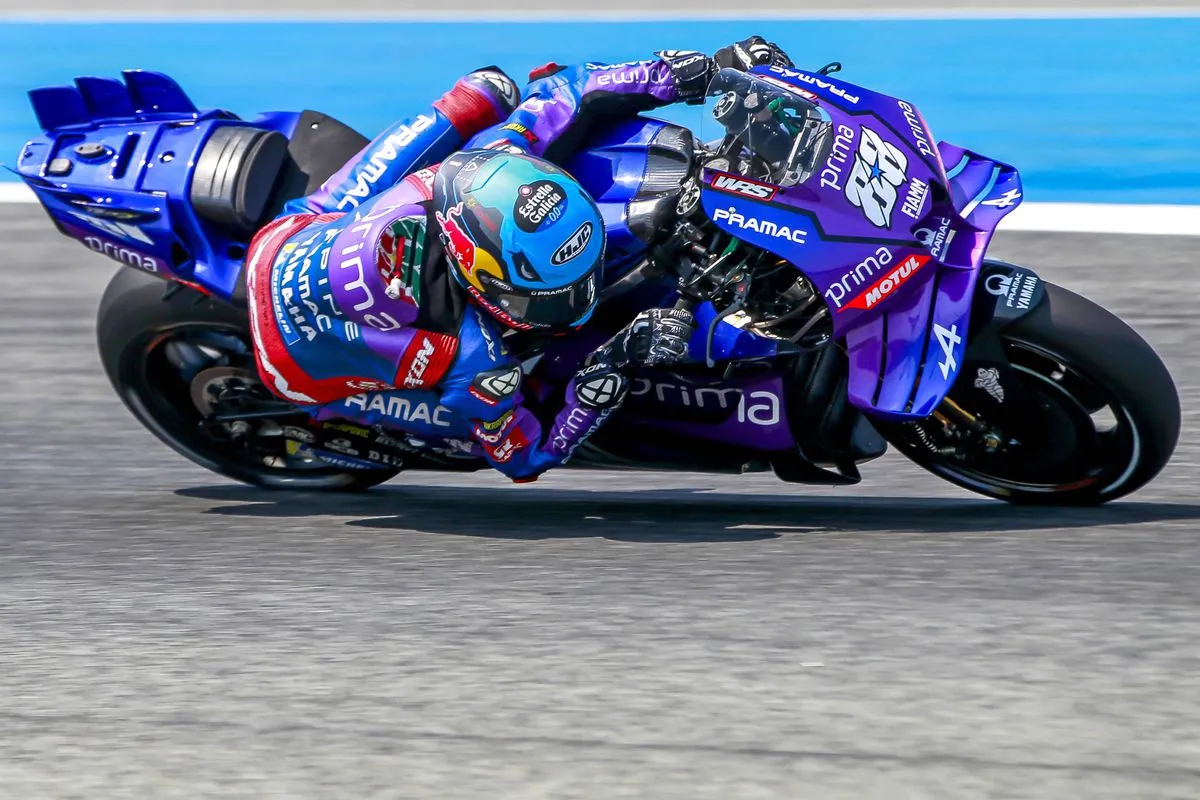
Several riders have voiced tentative support for a review of airbag inflation thresholds, especially for those with prior injuries. If Oliveira’s situation sparks regulatory discussion, the 2025 season might become a landmark year not just for his personal redemption, but for MotoGP’s approach to rider health.
Dorna and the FIM may soon face pressure to allow team-specific or rider-specific airbag settings, especially in light of emerging biomechanics research. There is growing awareness that technology, while beneficial, must be adaptable. Just as bikes are tuned for each rider’s style, the same logic could apply to protective gear.
Conclusion: Oliveira’s path forward in the MotoGP 2025 season
Miguel Oliveira’s 2025 season is shaping up to be one of the most emotionally charged and physically demanding of his career. At the center of it is a complex interplay between technological innovation and human vulnerability. The protective airbag, a symbol of safety evolution in MotoGP, is now under critical evaluation for its unintended side effects.
For Oliveira, the key will be managing his physical condition without compromising safety. If the collaboration between Yamaha, his medical team, and suit engineers succeeds, he could not only compete at a high level but also lead a progressive change in MotoGP safety standards.
As fans and analysts watch his every move, Oliveira’s journey will be more than a comeback story. It will be a testament to how modern motorsports must balance cutting-edge protection with the unique needs of each athlete. Whether the airbag becomes a tool of redemption or a symbol of restriction for Oliveira depends on how well innovation adapts to the fragile reality of the human body in motion.


